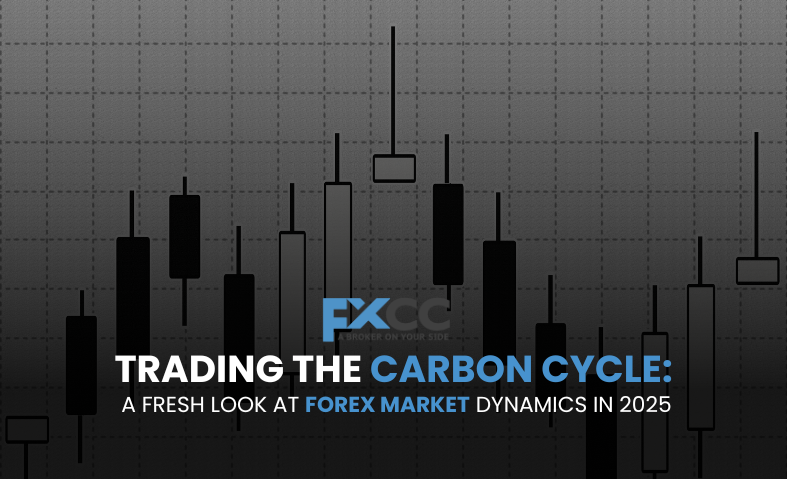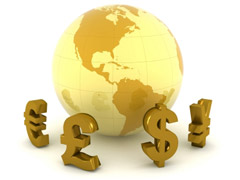The world of Forex trading has long been defined by traditional metrics: interest rates, GDP figures, inflation reports, and geopolitical shifts. These pillars have guided currency valuations and trading strategies for decades. However, as we navigate 2025, a new, increasingly influential force is quietly reshaping these dynamics: the global carbon cycle. What was once solely an environmental concern is now a burgeoning economic and financial factor, and savvy Forex traders are beginning to take note.
The Unseen Force in Forex: Carbon’s Growing Shadow
For years, the direct link between environmental issues and currency movements was tenuous at best, often dismissed as a peripheral “green” concern. Yet, as climate change intensifies and global efforts to mitigate its impact accelerate, national carbon footprints and climate policies are no longer abstract concepts. They are tangible elements influencing a country’s economic health, its attractiveness to investors, and ultimately, the value of its currency. In 2025, the shadow of carbon is visibly stretching across the Forex market, becoming a subtle but significant factor in its fast-paced world.

Carbon Footprints and Currency Values: A New Equation
The basic premise is straightforward: nations with strong commitments to decarbonization, proactive environmental policies, and robust green industries are increasingly perceived as more resilient and attractive investments. Conversely, countries heavily reliant on carbon-intensive industries or those lagging in climate action may face economic headwinds. While this might initially impact certain domestic industries, it signals a commitment to a sustainable future, potentially attracting foreign capital seeking “green” investments and bolstering the local currency. Conversely, a country heavily invested in fossil fuel exports might see its currency depreciate as global demand shifts and carbon regulations tighten worldwide. A nation’s engagement with the carbon cycle and its environmental policies are increasingly impacting the strength and stability of its currency.
Green Capital: How Bonds and Credits Move Currencies
The financial ecosystem supporting climate action is rapidly expanding, creating new avenues for capital flows that directly influence Forex. Green bonds, for instance, are debt instruments issued to finance environmentally friendly projects. When governments or corporations issue these bonds, they often attract international investors keen on sustainable portfolios. This influx of foreign capital directly increases demand for the issuing country’s currency, leading to appreciation. Similarly, the growing sophistication of carbon credit markets, like the European Union’s Emissions Trading System (EU ETS), creates a new tradable commodity. As demand for carbon credits fluctuates based on regulatory changes, corporate commitments, or market speculation, cross-border transactions involving these credits can generate significant currency movements. The rise of green financial instruments and carbon markets is creating new channels for capital flow, directly affecting currency valuations.
From Smoke Stacks to Solar Panels: Sectoral Shifts and Currency Swings
The global transition to a low-carbon economy is not just a policy shift; it’s a fundamental restructuring of industrial landscapes. This transition has direct implications for currency valuations. Countries with a competitive edge in green technologies – solar panels, wind turbines, electric vehicles, battery storage – are likely to see increased exports and attract foreign direct investment, bolstering their currencies. Conversely, nations heavily reliant on traditional, carbon-intensive exports may experience a decline in demand for their goods, leading to a weaker currency. Significant domestic investment in renewable energy infrastructure can also act as a magnet for foreign capital, further strengthening the local currency. These sectoral shifts introduce a new layer of volatility and opportunity for Forex traders, as the global shift towards sustainable industries is re-shaping trade balances and investment patterns.
The Carbon-Conscious Trader: New Data, New Strategies
For Forex traders in 2025, simply analyzing interest rate differentials or trade balances is no longer sufficient. A “carbon-conscious” approach is becoming essential. This means actively monitoring environmental policy announcements, tracking carbon pricing trends in various regions, and incorporating green investment reports into their fundamental analysis. New analytical tools that integrate Environmental, Social, and Governance (ESG) factors into Forex trading strategies are emerging, allowing traders to assess a country’s climate resilience and its potential for “green growth.” While climate vulnerability presents risks (e.g., currency depreciation following climate-related disasters), leadership in the green economy offers significant opportunities for strong currency appreciation. Successful Forex trading in 2025 will increasingly require an understanding of carbon-related data and a proactive approach to integrating environmental factors into trading strategies.
Navigating the Green Frontier: Challenges and Future Outlook
While the influence of the carbon cycle on Forex is undeniable, this “green frontier” comes with its own set of challenges. The pace and consistency of global climate policy implementation can be unpredictable, leading to market uncertainty. Furthermore, reliable and standardized environmental data relevant to Forex analysis is still developing. Lastly, the impact of the carbon cycle might be more pronounced in long-term currency trends, although short-term reactions to significant policy news or climate events are also becoming more common. Despite these complexities, the trend is clear: environmental sustainability is weaving itself into the fabric of global financial markets, presenting both challenges and exciting new avenues for informed traders.

Conclusion: Beyond Traditional Metrics
In conclusion, the carbon cycle is no longer confined to scientific discussions or environmental activism. It has emerged as a powerful, albeit often subtle, driver in the Forex market. As the world progresses towards a more sustainable future, the interplay between environmental policies, green finance, and national economic resilience will become increasingly critical for currency valuations. Forex traders who broaden their analytical horizons to include these environmental factors, moving beyond traditional metrics, will gain a significant competitive edge in the evolving landscape of 2025 and beyond.


